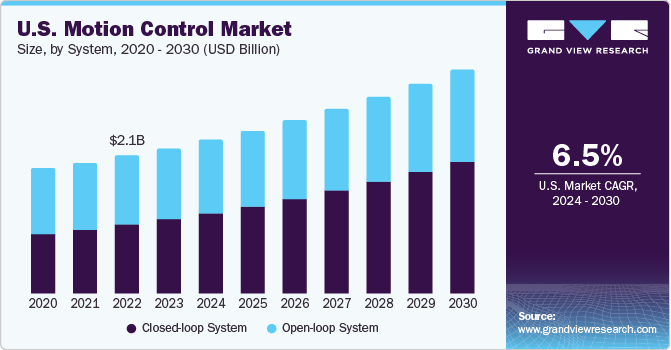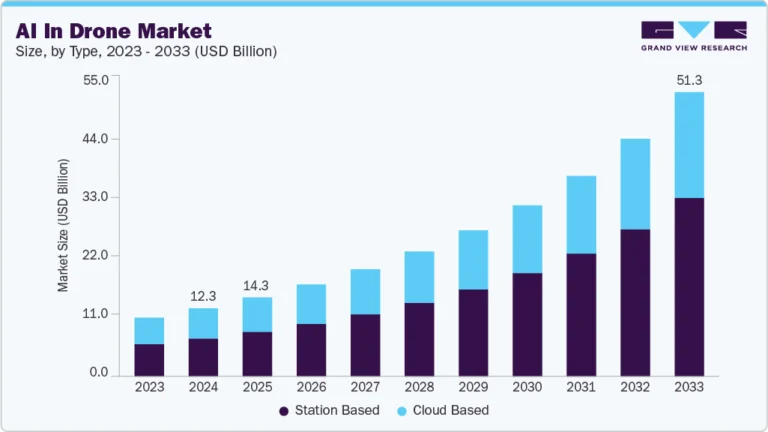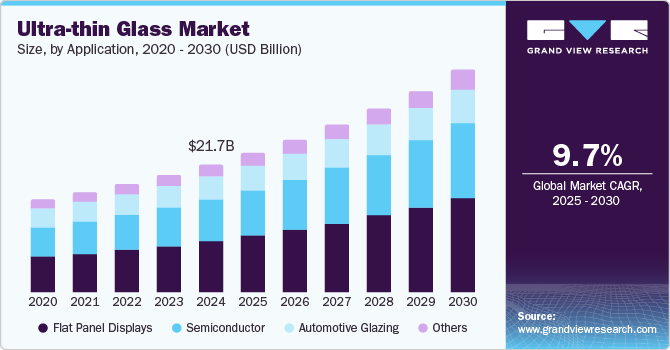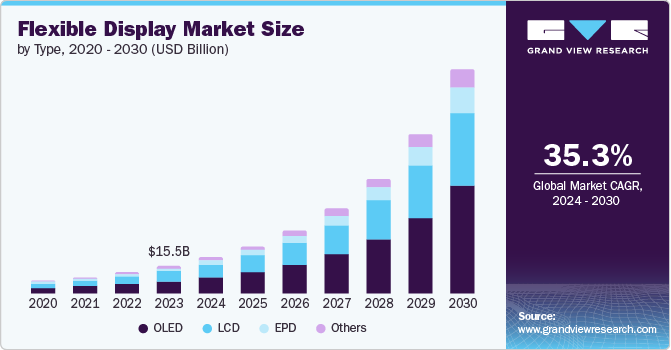Motion Control Market Size, Share & Trends Analysis growing at a CAGR of 5.8% from 2024 to 2030

The global motion control market size was estimated at USD 16,630.2 million in 2023 and is projected to reach USD 24,659.7 million by 2030, growing at a CAGR of 5.8% from 2024 to 2030. Factors such as the increasing demand for automation in various industries and the rising adoption of robotics & industry 4.0 are driving market growth.
Key Market Trends & Insights
- In terms of region, Asia Pacific was the largest revenue generating market in 2023.
- Country-wise, Spain is expected to register the highest CAGR from 2024 to 2030.
- In terms of segment, closed-loop system accounted for a revenue of USD 8,554.2 million in 2023.
- Closed-loop System is the most lucrative system segment registering the fastest growth during the forecast period.
Market Size & Forecast
- 2023 Market Size: USD 16,630.2 Million
- 2030 Projected Market Size: USD 24,659.7 Million
- CAGR (2024-2030): 5.8%
- Asia Pacific: Largest market in 2023
Request a free sample copy or view report summary: https://www.grandviewresearch.com/industry-analysis/motion-control-market-report/request/rs1
Moreover, incorporating AI/ML and advanced control algorithms in motion control systems presents significant growth opportunities for the market. The use of motion control technology in various industries, including manufacturing, automotive, and aerospace, enables precise control over machinery, leading to optimized resource utilization and reduced waste. It also helps minimize operational costs, leading to fewer errors and lower production downtime, contributing to cost savings. In addition, motion control technology allows for handling hazardous tasks or repetitive activities, ensuring improved safety for workers and reducing issues associated with specific manual tasks.
Motion control systems are becoming more connected to the Industrial Internet of Things (IIoT), which allows for remote monitoring, predictive maintenance, and real-time data analysis. It results in better decision-making for businesses as they can bridge the gap between the physical and virtual worlds of manufacturing. By utilizing these new technologies, manufacturing businesses are moving towards creating self-organizing, autonomous decision-making, and acting smart factories. The digital enterprise is considered to be the future of manufacturing. According to the Global Innovation Index 2023, the number of industrial robots in operation increased by 14.6% between 2020 and 2021, reaching a total of 3.4 million robots.






